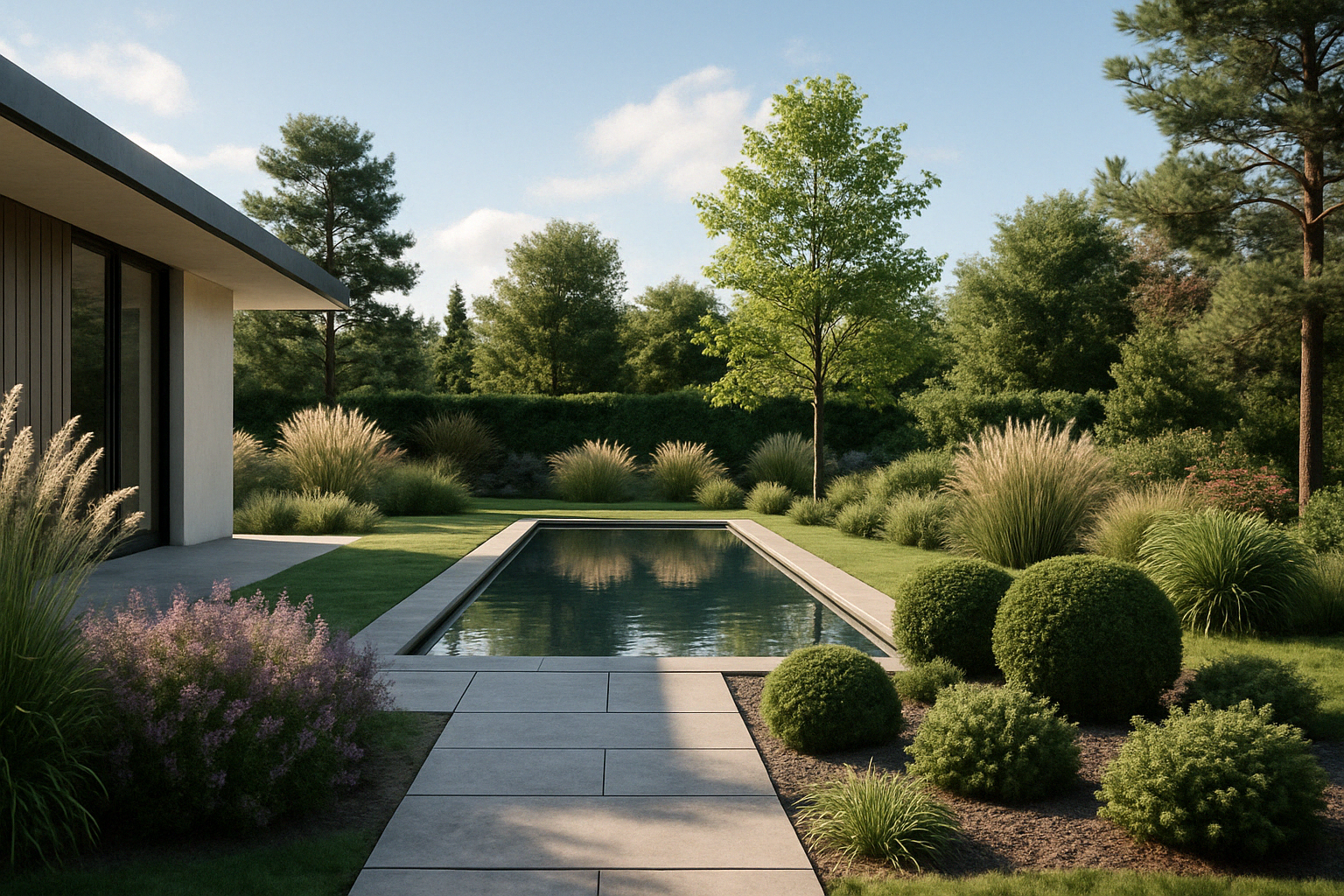Let’s talk landscapes—no, not the kind you hike through on weekends (unless you’re into that too), but the kind you bring to life in a stunning 3D environment.
Because in architecture, landscaping, and even real estate marketing, your project isn’t just about the building anymore. It’s about the full picture—trees, pathways, garden lighting, pool shadows, the way sunlight hits the patio at 5 PM in spring.
And the secret to selling that picture before the first shovel hits the dirt?
– Realistic 3D landscape modeling.
Today, we’re diving into how this visual superpower works, why it matters, and how it can turn a “meh” project into a “wow, take my money” presentation.
1. Why Landscape Visualization is a Big Deal
Whether you’re designing a residential backyard, a high-end resort, or a public park—clients want to see it before they say yes. And not just a vague sketch or a plant list… they want to feel it.
With 3D landscape modeling, you can:
- Show how different elements interact (water, light, textures)
- Preview plant growth over seasons
- Test layout flow, privacy levels, and sightlines
- Help clients emotionally connect to the space
It’s not just helpful. It’s game-changing for approvals, sales, and final results.
2. Tools That Make It Happen
Creating stunning, believable landscapes doesn’t happen in Microsoft Paint (shocking, right?). It takes a solid toolkit and a little artistry.
JetBlack Studio’s Toolbox Includes:
- SketchUp – For laying out core terrain and structures
- Lumion – To light up the scene with realistic water, lighting, and foliage
- Enscape – Real-time rendering that feels alive
- Pool Studio – For high-end outdoor water features and pool design
- Photoshop – For final touchups or composite layers
Bonus tools like Quixel, Megascans or Twinmotion are great for ultra-detailed terrains or commercial spaces with massive visual scope.
3. Building the Foundation: Terrain & Topography
Every great landscape starts with the ground beneath your (virtual) feet. Terrain modeling is where we
define elevation, slopes, flat spaces, and functional flow.
A good 3D model can:
- Recreate real topography using GIS data or surveys
- Sculpt in grade changes, slopes, retaining walls
- Define flat zones for patios, pergolas, pools, and paths
Want to show how water runs off in a storm? Yep, we can simulate that too.
4. The Power of Planting (Literally)
Let’s talk greenery.
Plants in 3D modeling aren’t just blobs of green—they have depth, variation, and purpose. Whether we’re adding cacti for a desert landscape or flowering shrubs for a residential vibe, botanical realism adds texture, color, and scale.
In JetBlack Studio renders, you’ll often see:
- Accurate plant height and spread
- Seasonal color variation
- Strategic layering (trees > bushes > flowers)
- Native plant libraries based on region
Clients don’t just see a tree. They see shade in summer, golden leaves in fall, and the way it frames their morning coffee view.
5. Lighting and Shadows: Setting the Mood
Lighting transforms a decent render into a magazine-worthy shot. We simulate natural light using global illumination, real-world sun paths, and time-of-day simulation.
Here’s what lighting helps us show:
- How shadows move across the yard
- How a garden looks at dusk with warm path lighting
- The reflection of water from a pool at noon
- Mood lighting for fire pits and night lounges
Because no one falls in love with a dark, flat render. But add a golden-hour glow? Game over.
6. Adding Life: Water, Furniture & People
A realistic landscape doesn’t stop at plants. We add the little things that make it feel lived in:
- Pools with accurate water movement and reflections
- Outdoor kitchens, fire pits, furniture layouts
- People and pets (yes, even your client’s imaginary dog if needed)
- Textures like grass, stone, wood, gravel, and wet concrete
All of this makes a render not just visual—it becomes experiential. The client can picture themselves walking through the space. That’s what sells it.
7. Real Results for Real Businesses
We’ve seen firsthand how 3D landscape modeling boosts project approvals and sells designs faster:
Landscaping companies use our renders to win bids with polished presentations
Architects use models to ensure that structures complement the surrounding environment
Real estate developers use virtual tours to sell homes before they’re even built
And let’s be honest—it doesn’t hurt when clients say things like:
“I knew I wanted it the moment I saw your render.”
8. Why JetBlack Studio?
We don’t do generic green blobs and clip-art trees. At JetBlack Studio, our 3D landscape modeling is built to impress and inspire.
- Realistic visuals
- Intuitive layouts
- Artistic storytelling
- Technical precision
Whether you’re selling a dream backyard, a commercial resort space, or a community greenspace, we help you bring that vision to life—before a single plant is planted.
Final Thought
A landscape design isn’t just about the layout—it’s about the feeling it creates.
And in today’s visual-first world, if your design doesn’t evoke that feeling instantly, it gets lost. 3D modeling bridges the gap between your vision and your client’s imagination—and when they see it, they believe it.
Ready to improve your visuals? Contact Us!
Author: Alan Amaya
JetBlack Studio
Where creativity meets technology
